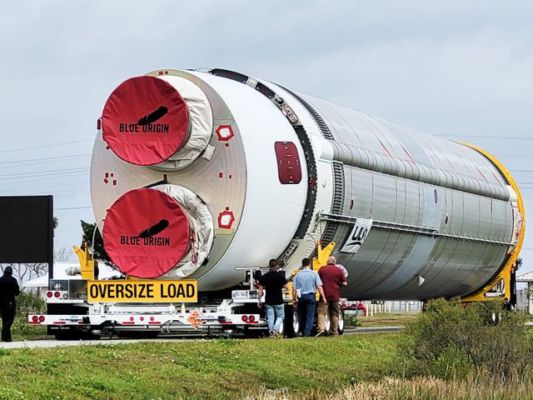Blue Origin will break 2 records of oldest and youngest astronauts, will beat Branson on a third point as well
Virgin Galactic's Richard Branson may have beaten Amazon billionaire Jeff Bezos to space by being the first billionaire space tourist on the first-ever such flight. But there are at least two more records that that Blue Origin aims to shatter on its debut crewed flight with billionaire founder Jeff Bezos and his brother on Tuesday (July 20). In fact, three. But more about the third record a it later.
Here are the two longstanding astronaut age records that will be broken:
- Flying aboard the company's New Shepard rocket will be Wally Funk, an 82-year-old aviator best known for attempting to enter NASA's astronaut program in the 1960s. That will make her the oldest astronaut to fly into space. The oldest astronaut to reach space before Funk was John Glenn - a part of NASA's famed Mercury program that Funk fought unsuccessfully to be in. was 77 when he flew on his second mission on NASA's space shuttle Discovery in 1998. On February 20, 1962, Glenn flew the Friendship 7 mission, becoming the first American to orbit the Earth, the third American and fifth person in history to be in space. In those days, NASA did not allow women to test for or join space missions as the basic qualification was they had to be military pilots until the 1970s - primarily a male domain. That had proven to be a glass ceiling that Funk - a pioneering female aviator who was one of the famed Mercury 13 - unfortunately could not breach.
- The second record that the Blue Origin flight will break is that of the youngest astronaut in space. 18-year-old Oliver Daemen who plans to study physics in the fall will take that accolade after the New Shepard flight lands. Gherman Stepanovich Titov - a Soviet (Russian) cosmonaut on 6 August 1961 - till date remains the youngest person to fly in space. Born on 11 September 1035, Titov was just a month short of 26 years old at launch. He had also become the second human to orbit the Earth, aboard Vostok 2, preceded by Yuri Gagarin on Vostok 1. He was the fourth person in space, counting suborbital voyages of US astronauts Alan Shepard and Gus Grissom.
New Shepard's first crewed flight will carry four passengers, but no pilot as the space capsule is an automated system. The crew will include Jeff Bezos, 57, who founded Blue Origin in 2000, and Mark Bezos, 53, the younger brother of Bezos and a millionaire in his own right. Wally Funk and Oliver Daemon - a student at the University of Utrecht in the Netherlands - who is a late addition to the crew, replacing the anonymous winner of a $28 million auction for the first paid seat on New Shepard. - The third record that the New Shepard flight will break is that of a space tourism flight crossing the Karman line. Richard Branson went into space in his Virgin Galactic Unity 22 vehicle along with five other crew members. They reached an altitude of 55 miles (86 kilometres) over the New Mexico desert and then landed on a runway while gliding. But astrophysicist Professor Neil de Grasse Tyson does not call it a space flight at all. He reportedly told CNN, "First of all, it was suborbital. NASA did it 60 years ago with Alan Shepard, took off from Cape Canaveral and landed in the ocean. If you don't go fast enough to reach orbit you will fall and return to Earth.
Dr Neil de Grasse Tyson challenges Branson's claim:
"It's okay if you want to call it 'space' because average humans haven't gotten there before and it's a first for you. That's why it takes eight minutes to get into orbit and three days to reach the moon. That is actually space travel.
To explain his point of view better, he compared the locations of the moon and the International Space Stations (ISS) to scale model points. Giving the ISS a location of 1cm from the Earth, and pegging the moon at 10 meters' distance, Dr Tyson - the director of the Hayden Planetarium - said that the border that Richard Branson reached is less than 2 millimetres from the surface.
"I don't even know if you are going to see the (Earth's) curvature. I did some calculations and I think not. If you are 2 millimetres from the surface of this globe, you don't have the full perspective. It is a visual effect that you get from 50 miles up (nearly 80 km). So have fun," said deGrasse Tyson.
In comparison, the New Shepard's test flights typically soared above the internationally recognized Kármán line, generally interpreted at 62 miles .

